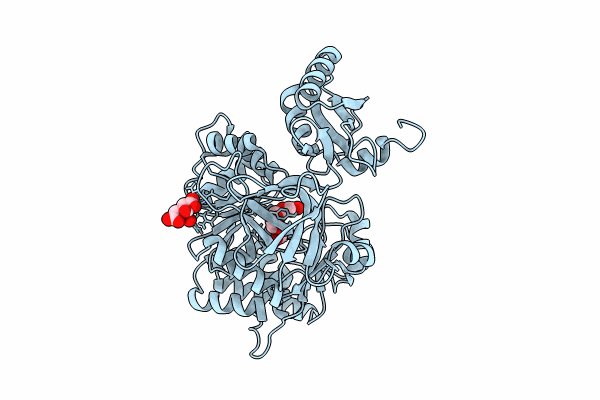
Deposition Date
2023-11-30
Release Date
2024-06-26
Last Version Date
2024-10-09
Entry Detail
Biological Source:
Source Organism:
Kitasatospora cystarginea (Taxon ID: 58350)
Host Organism:
Method Details:
Experimental Method:
Resolution:
1.89 Å
R-Value Free:
0.23
R-Value Work:
0.19
R-Value Observed:
0.19
Space Group:
P 1 21 1


